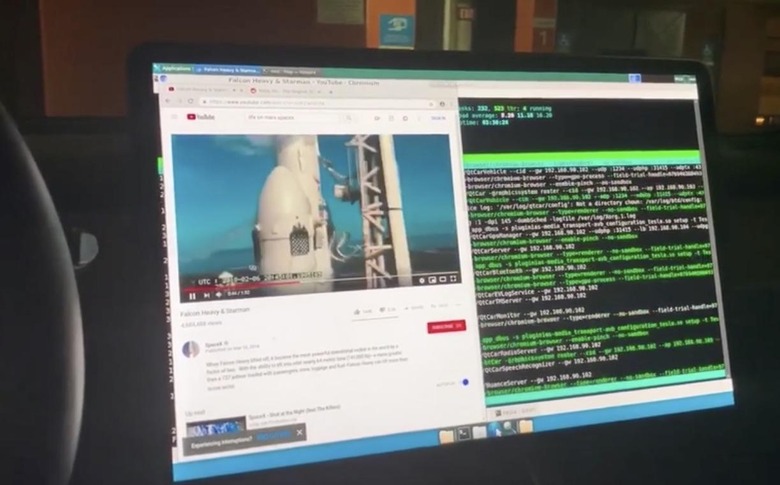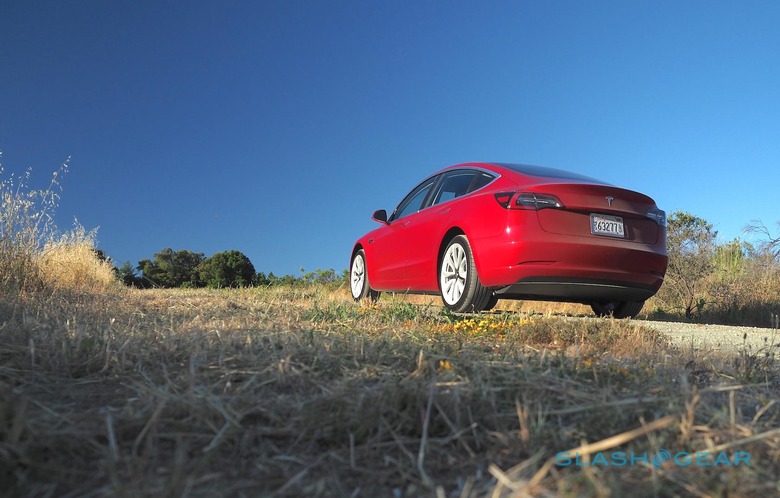Tesla Model 3 Hack Puts YouTube And Ubuntu On The Dash
Modern cars may be computers on wheels, but even Tesla probably wasn't expecting Model 3 owners to go to the effort of rooting the EV and running Ubuntu on it. That's just what one person has spent an estimated 100 hours in doing, though, and in the process confirming exactly what hardware the Model 3's touchscreen-dominated dashboard runs, as well as getting owners of the car tentatively excited about future modifications.
While Tesla – like every automaker – is happy to talk about performance figures and range of its EVs, it's typically less vocal about the components it's using. As the focus on in-car infotainment systems has increased over the past few years, however, more and more car buyers are asking questions about the capabilities (and upgrade potential) of their dashboard systems. Still, few automakers are discussing specifics yet.
That didn't stop one Model 3 owner, and member of the Tesla Reddit forum, from going digging. He managed to SSH into the infotainment system and get Ubuntu running. That meant he could access YouTube – something the stock Tesla browser doesn't permit, for safety reasons – as well as get a read-out of the hardware specifications.

So, we now know that the Model 3 uses an Intel Atom E3950 quad-core processor running at 1.6 GHz, and paired with 4GB of memory. There's a 64 GB eMMC for storage. A Freescale/NXP QorIQ chip acts as a gateway to the Autopilot hardware; that's a separate NVIDIA Tegra Parker and a Pascal GPU on a different board.
Of course, Tesla itself has used this architecture to great advantage. While an Intel Atom processor may not sound like much in the context of modern notebooks, for the automotive world it's potent indeed. Tesla relies on that to deliver regular over-the-air updates to its cars, wirelessly adding new features that more traditional automakers would at best require the car be returned to a dealership to install, or more likely involve buying a whole new vehicle to attain.
The system has also been useful when it comes to addressing safety and performance complaints. The Model 3, for example, was criticized in early testing for its braking performance. Tesla, though, was able to push out new calibration to the drivetrain which significantly reduced the distance required for the car to stop in an emergency situation.

Assuming Tesla doesn't instantly clamp down on hacks like this, there are some possibilities that Model 3 owners are already excited about. One big one is adding a head-up display (HUD) to the car, something that Tesla doesn't currently offer. That would project details like speed and range onto the windshield, and thus allow drivers to avoid looking down at the center-mounted touchscreen.
Still, it seems unlikely that Tesla will play ball with all this. While the automaker prides itself on being responsive to owner requests – and indeed Elon Musk hosts semi-regular feature brainstorming on Twitter, which has directly led to new functionality being pushed out to its cars – there's a big difference between that and drivers going tinkering by themselves.
That could have significant safety implications, after all, and Tesla has already found itself at loggerheads with road crash investigators when systems like Autopilot have been blamed for incidents. Anything that blurs the lines between the safety features installed at the factory, but then potentially modified by owners later on, seems like a no-go. As a proof of concept, however, consider us intrigued.
Thanks Bozi!
